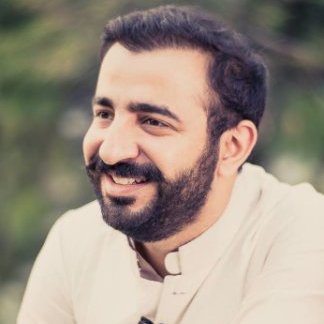Seed Capital
9 Seed Investor Podcasts, Each Focusing On Different Types Of Startups

There are hundreds of seed investors actively looking for startups to invest in right now, but the types of businesses they are looking for are as varied as each individual investor. To give entrepreneurs the opportunity to hear directly from a wide variety of investors what interests them and the types of startups they focus on, we continue to interview some of the most active investors around the world. Here are my nine most recent conversations with seed investors shared as 30-minute podcast interviews. If you have an interest in financing your venture, listen and learn. Start taking notes on those investors who may be a good fit for your business.
Rajeev Madhavan, Founder and General Partner at Clear Ventures, was first a highly successful serial entrepreneur, and brings to the VC game an entrepreneur’s view of the world. Rajeev highlights the Series A gap in a big way.
383rd 1Mby1M Entrepreneurship Podcast With Rajeev Madhavan, Clear Ventures
Rajeev Madhavan, Founder and General Partner at Clear Ventures, was first a highly successful serial entrepreneur, and brings to the VC game an entrepreneur’s view of the world. Rajeev highlighted the Series A gap in a big way.
Podcast: Play in new window | Download
Subscribe: Apple Podcasts | Android | Google Play | Stitcher | TuneIn | RSS
1Mby1M Virtual Accelerator Investor Forum: With Anirudh Suri of India Internet Fund (Part 3)
Sramana Mitra: I have a question that I want to double-click on. One of the big differences in the Indian market that doesn’t exist in the US market is this abundant supply of cheap labor. Are you seeing business models and business ideas that creatively take advantage of that phenomenon to offer value to customers? Do you have any examples?
Anirudh Suri: If you look at even the companies that have become unicorns or are larger companies in the Indian context, many of them have taken advantage of the cheap labor that India offers. When you look at Amazon or Flipkart today, they have cash on delivery. >>>
1Mby1M Virtual Accelerator Investor Forum: With Anirudh Suri of India Internet Fund (Part 2)
Sramana Mitra: It sounds like the original business model probably had a low TAM. Turning it into a financial institution opens up a much bigger TAM, right?
Anirudh Suri: The initial focus in the Indian market is on affordable housing institutions and micro-financing institutions. Very quickly, they realized that just providing them credit scores was not going to be very profitable in the long run.
Sramana Mitra: You want to talk about any other company in your portfolio?
Anirudh Suri: Another company that is very interesting is a company called Tookitaki. They have pivoted over time. They >>>
1Mby1M Virtual Accelerator Investor Forum: With Yanev Suissa of SineWave Ventures (Part 7)
Sramana Mitra: This is your first fund, right?
Yanev Suissa: Yes.
Sramana Mitra: Have you had any exits yet?
Yanev Suissa: No, we’ve been investing for about a year.
Sramana Mitra: Next question is about unicorn mania. How does a seed investor protect themselves in the event that there is huge amount of capital being raised? You said that you follow through in your investments, but how far can you go with that given that the trend right now is raising huge amounts of money. >>>
1Mby1M Virtual Accelerator Investor Forum: With Anirudh Suri of India Internet Fund (Part 1)

Responding to a popular request, we are now sharing transcripts of our investor podcast interviews in this new series. The following interview with Anirudh Suri was recorded in December 2017.
Anirudh Suri, Founding Partner at India Internet Fund, talks about the funding trends in the Indian startup market.
Sramana Mitra: Help us introduce you to our audience. Tell us about your fund and investment focus. How big is the fund? What size investments do you make?
Anirudh Suri: We are an early stage seed to Series A fund. We invest primarily in technology-based ventures. >>>
1Mby1M Virtual Accelerator Investor Forum: With Yanev Suissa of SineWave Ventures (Part 6)
Sramana Mitra: In this continuum of de-risking, where are you playing?
Yanev Suissa: All of these things are reasonable factors that any VCs would look at including us. But to build an investment thesis of only investing if certain factors exist is not logical.
We invest whether you have revenue or not, whether you have built the technology or not. It depends. If you’re a brilliant engineer in a space that you have expertise in and have worked in and we have either an existing relationship or a faith in your >>>
1Mby1M Virtual Accelerator Investor Forum: With Eva Ho of Fika Ventures (Part 3)
Sramana Mitra: How do you process the current investment climate where capital is moving further and further upstream with all these larger funds wanting to invest in much larger Series A deals, how does a seed investor or entrepreneur mitigate the Series A gap? There’s clearly a Series A gap. 50,000 to 70,000 seed-stage investments and only 1,200 to 1,500 Series A’s. How do you view that phenomenon?
Eva Ho: This is a real challenge. It’s a great question. I don’t have all the answers to this. We’re watching the market dynamics change on a month-to-month and year-to-year basis. When we started Susa five years ago, the seed market was quite different. We were able to get into deals easier. Back then, we weren’t writing large checks. We were writing checks for about $250,000. We could get >>>
